Articolo G.A. Partial Differential Equations and Boundary Value Problems with Maple V
Подождите немного. Документ загружается.

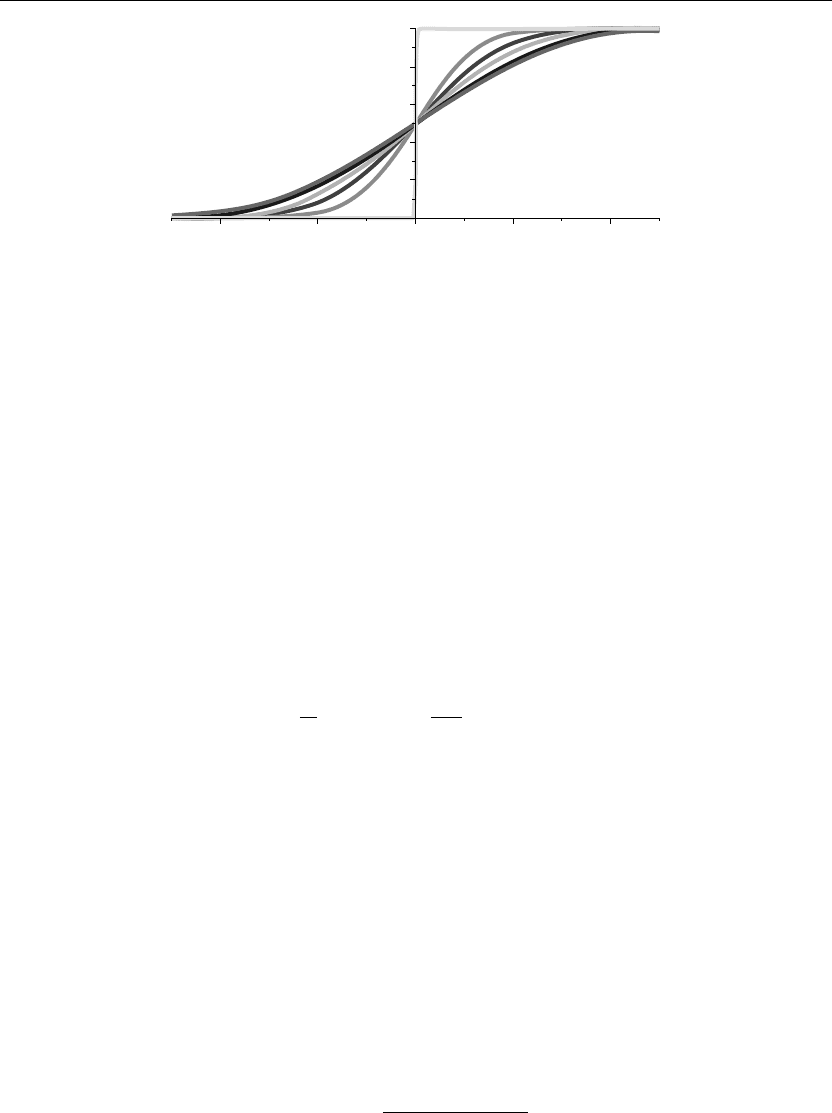
578 Chapter 9
0
x
0.2
0.4
0.6
0.8
1
222424
Figure 9.2
We note here that the initial condition function f(x) is not absolutely integrable over the infinite
domain, and we would not have been able to solve the preceding by the transform method. The
convolution method is more forgiving on the conditions for f(x) in that it just requires that f(x)
be finite over the domain. For some problems, the convolution method is the preferred method.
EXAMPLE 9.7.4: (Fourier sine integral solution) We seek the temperature distribution u(x, t)
in a thin, long rod over the semi-infinite interval I ={x |0 <x<∞} whose lateral surface is
insulated. The end x = 0 is held fixed at temperature 0. The initial temperature distribution
u(x, 0) = f(x) is given as follows. There is no source term in the system, and the thermal
diffusivity is k = 1/4.
SOLUTION: The diffusion partial differential equation is
∂
∂t
u(x, t) = k
∂
2
∂x
2
u(x, t)
The boundary conditions are that the solution should be absolutely integrable over the interval
and we have a type 1 condition at x = 0:
∞
0
|u(x, t)|dx<∞ and u(0,t)= 0
The initial condition is
u(x, 0) = 10 x e
−x
2
Due to the type 1 condition at the origin, we choose the Fourier sine integral form of solution:
u(x, t) =
∞
0
2U(ω, t) sin(ωx)
π
dω
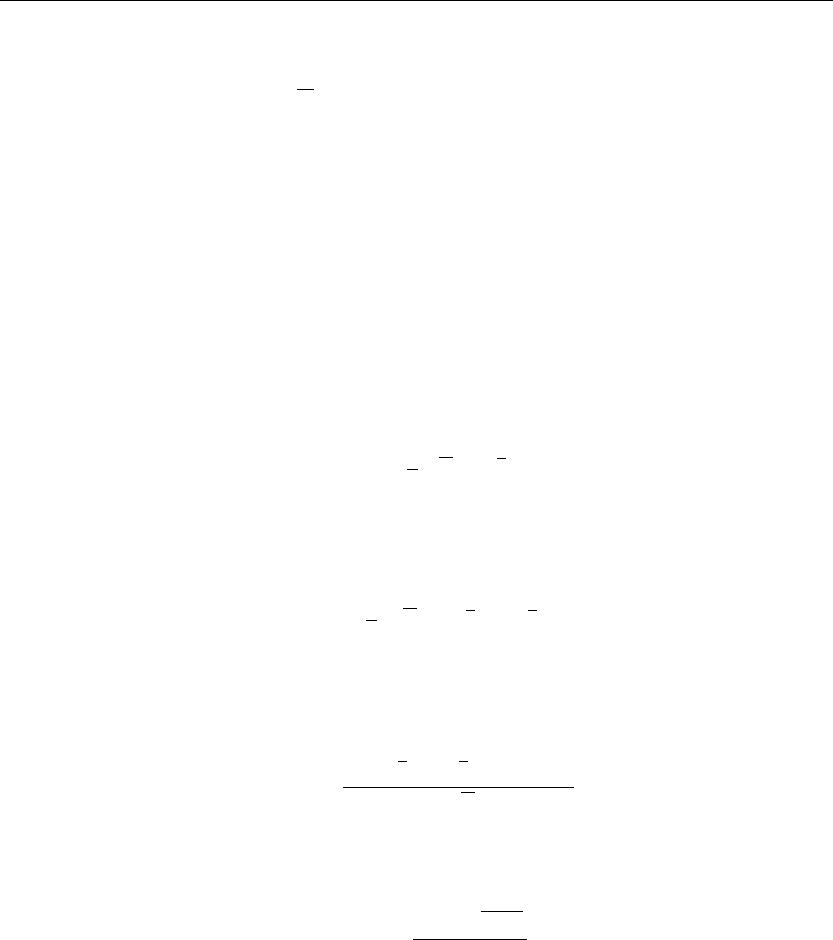
Infinite and Semi-infinite Spatial Domains 579
Here, U(ω, t) satisfies the differential equation
∂
∂t
U(ω, t) +kω
2
U(ω, t) = 0
Assignment of system parameters
> restart:with(plots):k:=1/4:f(x):=10*x*exp(−xˆ2):
Fourier sine transform of initial condition term
> U(omega,0):=Int(f(x)*sin(omega*x),x=0..infinity);
U(ω, 0) :=
∞
0
10 x e
−x
2
sin(ωx) dx (9.13)
> U(omega,0):=simplify(value(%));
U(ω, 0) :=
5
2
√
πω e
−
1
4
ω
2
(9.14)
Fourier sine transform of solution
> U(omega,t):=U(omega,0)*exp(−k*omegaˆ2*t);
U(ω, t) :=
5
2
√
πωe
−
1
4
ω
2
e
−
1
4
ω
2
t
(9.15)
Fourier sine integral solution
> u(x,t):=Int(U(omega,t)*(2/Pi)*sin(omega*x),omega=0..infinity);assume(t>0):
u(x, t) :=
∞
0
5ω e
−
1
4
ω
2
e
−
1
4
ω
2
t
sin(ωx)
√
π
dω (9.16)
> u(x,t):=simplify(value(%));
u(x, t∼) :=
10 x e
−
x
2
1+t∼
(1 +t∼)
3/2
(9.17)
ANIMATION
> animate(u(x,t),x=0..5,t=0..5,thickness=3);
The preceding animation command shows the spatial-time-dependent solution of the
temperature u(x, t) in the medium. The animation sequence here and in Figure 9.3 shows
snapshots of the animation at times t = 0, 1, 2, 3, 4, 5.
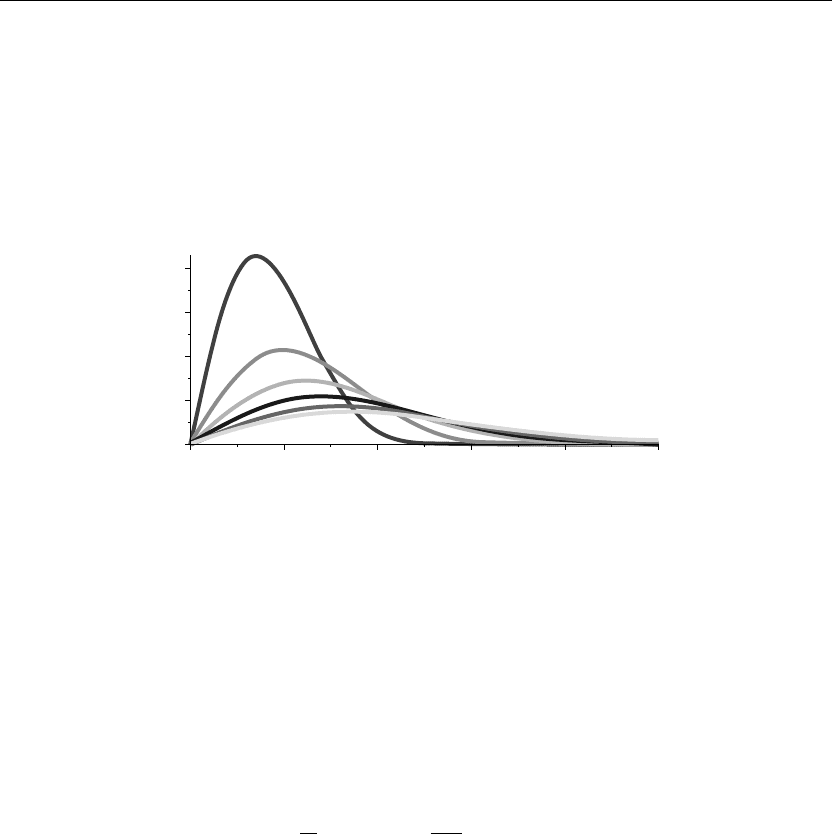
580 Chapter 9
ANIMATION SEQUENCE
> u(x,0):=subs(t=0,u(x,t)):u(x,1):=subs(t=1,u(x,t)):
> u(x,2):=subs(t=2,u(x,t)):u(x,3):=subs(t=3,u(x,t)):
> u(x,4):=subs(t=4,u(x,t)):u(x,5):=subs(t=5,u(x,t)):
> plot({u(x,0),u(x,1),u(x,2),u(x,3),u(x,4),u(x,5)}x=0..5,thickness=10);
2
x
34510
0
1
2
3
4
Figure 9.3
EXAMPLE 9.7.5: (Solution by the method of images) Here we consider the same problem as
in Example 9.7.4, except now we use the method of images, which allows for use of the regular
Fourier integral. Because the boundary conditions are homogeneous and of type 1 at x = 0, we
reflect the initial condition function u(x, 0) = f(x) about the origin, thus forming its odd
extension onto the negative portion of the x-axis. Since we are only interested in the solution
for x>0, we will ignore that portion for x<0.
SOLUTION: The diffusion partial differential equation is
∂
∂t
u(x, t) = k
∂
2
∂x
2
u(x, t)
The boundary conditions are that the solution be absolutely integrable over the interval, and we
have a type 1 condition at x = 0:
∞
0
|u(x, t)|dx<∞ and u(0,t)= 0
The initial condition is
u(x, 0) = 10 x e
−x
2
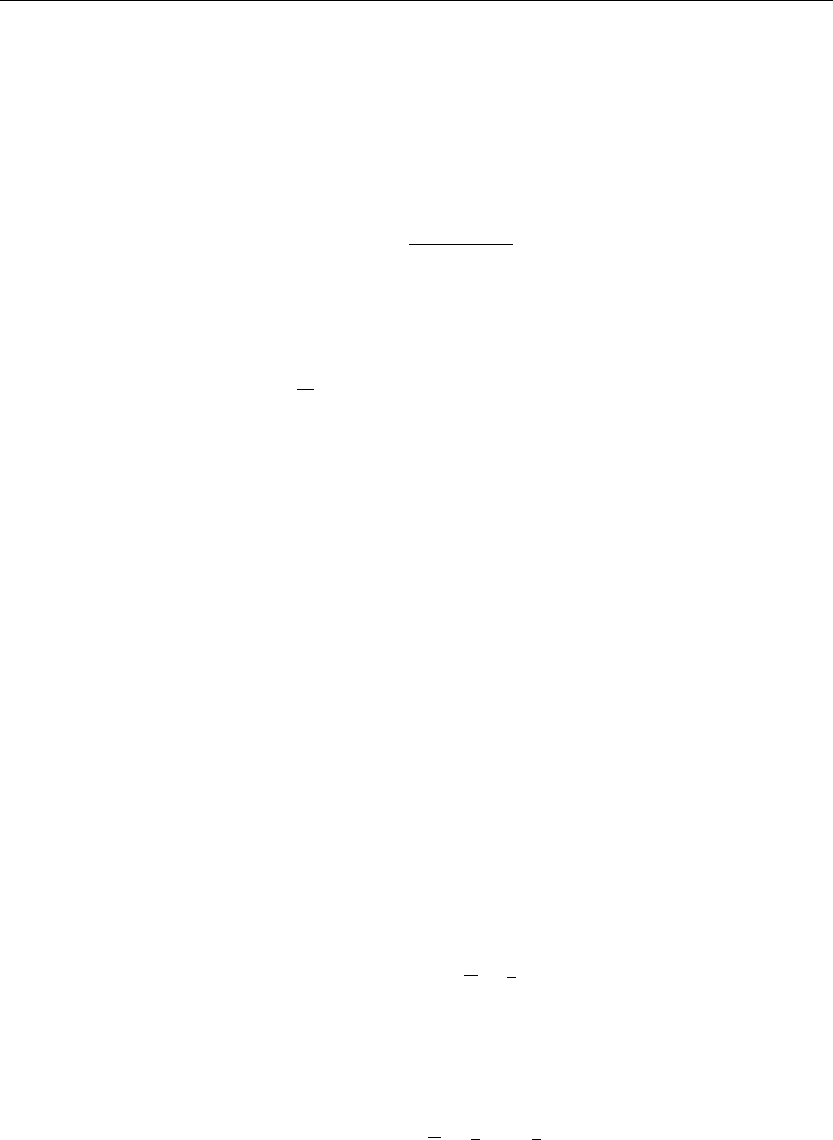
Infinite and Semi-infinite Spatial Domains 581
By the method of images, we use the Heaviside function H(x) to form the odd extension fo(x)
of f(x) with the operation
fo(x) = f(x)H(x) −f(−x)H(−x)
The Fourier integral form of the solution is
u(x, t) =
∞
−∞
U(ω, t) e
iωx
2π
dω
Here, U(ω, t) satisfies the differential equation
∂
∂t
U(ω, t) +kω
2
U(ω, t) = 0
Assignment of system parameters
> restart:with(plots):k:=1/4:f(x):=10*x*exp(−xˆ2):f(−x):=subs(x=−x,f(x)):
Formation of the odd extension of f(x)
> fo(x):=f(x)*Heaviside(x)−f(−x)*Heaviside(−x);
fo(x) := 10x e
−x
2
Heaviside(x) +10x e
−x
2
Heaviside(−x) (9.18)
Fourier transform of odd extension of initial condition term
> U(omega,0):=Int(−f(−x)*exp(−I*omega*x),x=−infinity..0)+Int(f(x)*exp(−I*omega*x),
x=0..infinity);
U(ω, 0) :=
0
−∞
10x e
−x
2
e
−Iωx
dx +
∞
0
10x e
−x
2
e
−Iωx
dx (9.19)
> U(omega,0):=simplify(value(%));
U(ω, 0) := −5Iω
√
π e
−
1
4
ω
2
(9.20)
Fourier transform of solution
> U(omega,t):=U(omega,0)*exp(−k*omegaˆ2*t);
U(ω, t) := −5Iω
√
π e
−
1
4
ω
2
e
−
1
4
ω
2
t
(9.21)
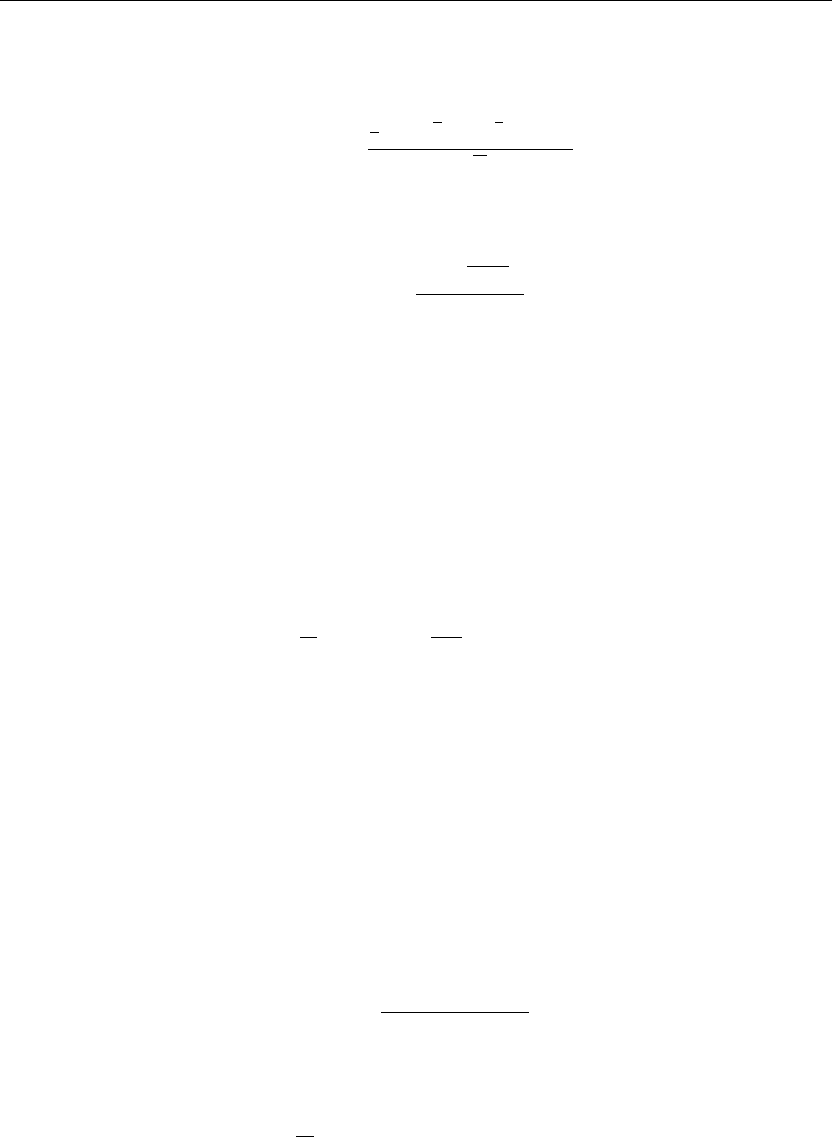
582 Chapter 9
Fourier integral solution
> u(x,t):=Int(U(omega,t)*(1/(2*Pi))*exp(I*omega*x),omega=−infinity..infinity);assume(t>0):
u(x, t) :=
∞
−∞
⎛
⎝
−
5
2
Iω e
−
1
4
ω
2
e
−
1
4
ω
2
t
e
Iωx
√
π
⎞
⎠
dω (9.22)
> u(x,t):=simplify(value(%));
u(x, t∼) :=
10 e
−
x
2
1+t∼
x
(1 +t∼)
3/2
(9.23)
Note that we arrive at the exact same solution as we did when using the Fourier sine transform
method.
EXAMPLE 9.7.6: (Fourier cosine integral solution) We seek the temperature distribution u(x, t)
in a long, thin rod over the semi-infinite interval I ={x |0 <x<∞}whose lateral surface is
insulated and whose left end is insulated at x = 0. The initial temperature distribution in the rod
u(x, 0) = f(x) is given as follows. There is no source term in the system and the thermal
diffusivity is k = 1/4.
SOLUTION: The diffusion partial differential equation is
∂
∂t
u(x, t) = k
∂
2
∂x
2
u(x, t)
The boundary conditions are that the solution be absolutely integrable over the interval, and we
have a type 2 condition at x = 0:
∞
0
|u(x, t)|dx<∞ and u
x
(0,t)= 0
The initial condition is
u(x, 0) = 10 e
−x
2
Due to the type 2 condition at the origin, we choose the Fourier cosine integral form of solution:
u(x, t) =
∞
0
2U(ω, t) cos(ωx)
π
dω
Here, U(ω, t) satisfies the differential equation
∂
∂t
U(ω, t) +kω
2
U(ω, t) = 0
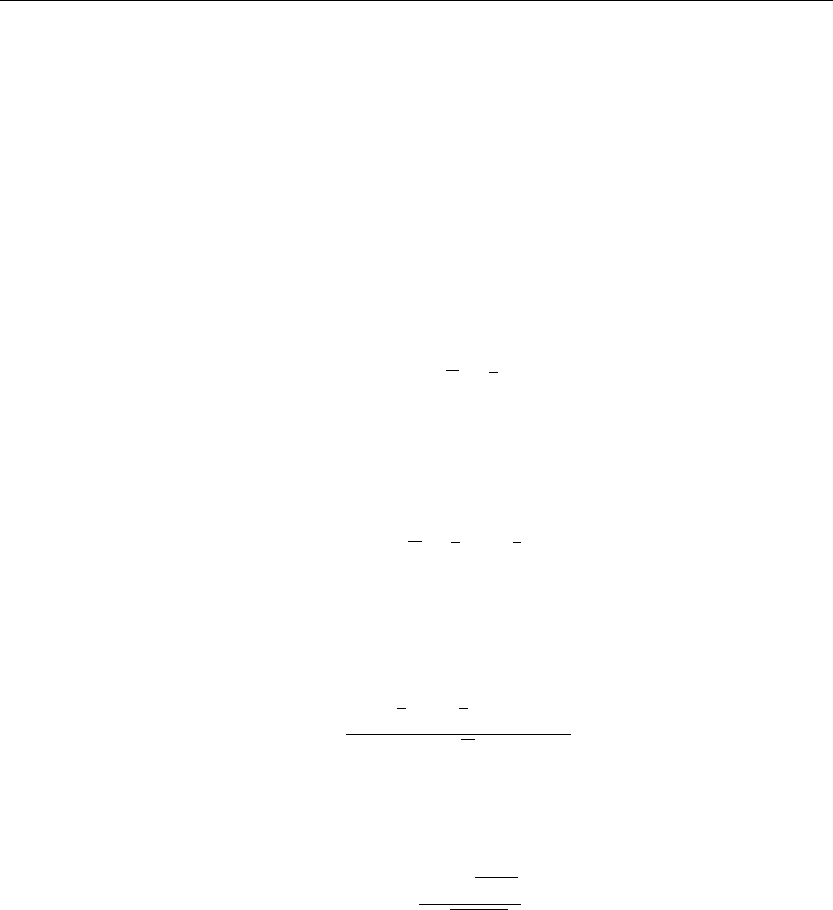
Infinite and Semi-infinite Spatial Domains 583
Assignment of system parameters
> restart:with(plots):k:=1/4:f(x):=10*exp(−xˆ2):
Fourier cosine transform of initial condition term
> U(omega,0):=Int(f(x)*cos(omega*x),x=0..infinity);
U(ω, 0) :=
∞
0
10 e
−x
2
cos(ωx) dx (9.24)
> U(omega,0):=simplify(value%));
U(ω, 0) := 5
√
π e
−
1
4
ω
2
(9.25)
Fourier cosine transform of solution
> U(omega,t):=U(omega,0)*exp(−k*omegaˆ2*t);
U(ω, t) := 5
√
π e
−
1
4
ω
2
e
−
1
4
ω
2
t
(9.26)
Fourier cosine integral solution
> u(x,t):=Int(U(omega,t)*(2/Pi)*cos(omega*x),omega=0..infinity);assume(t>0):
u(x, t) :=
∞
0
10 e
−
1
4
ω
2
e
−
1
4
ω
2
t
cos(ωx)
√
π
dω (9.27)
> u(x,t):=simplify(value(%));
u(x, t∼) :=
10 e
−
x
2
1+t∼
√
1 +t∼
(9.28)
ANIMATION
> animate(u(x,t),x=0..5,t=0..5,thickness=3);
The preceding animation command shows the spatial-time-dependent solution of the
temperature u(x, t) in the medium. The animation sequence here and in Figure 9.4 shows
snapshots of the animation at times t = 0, 1, 2, 3, 4, 5.
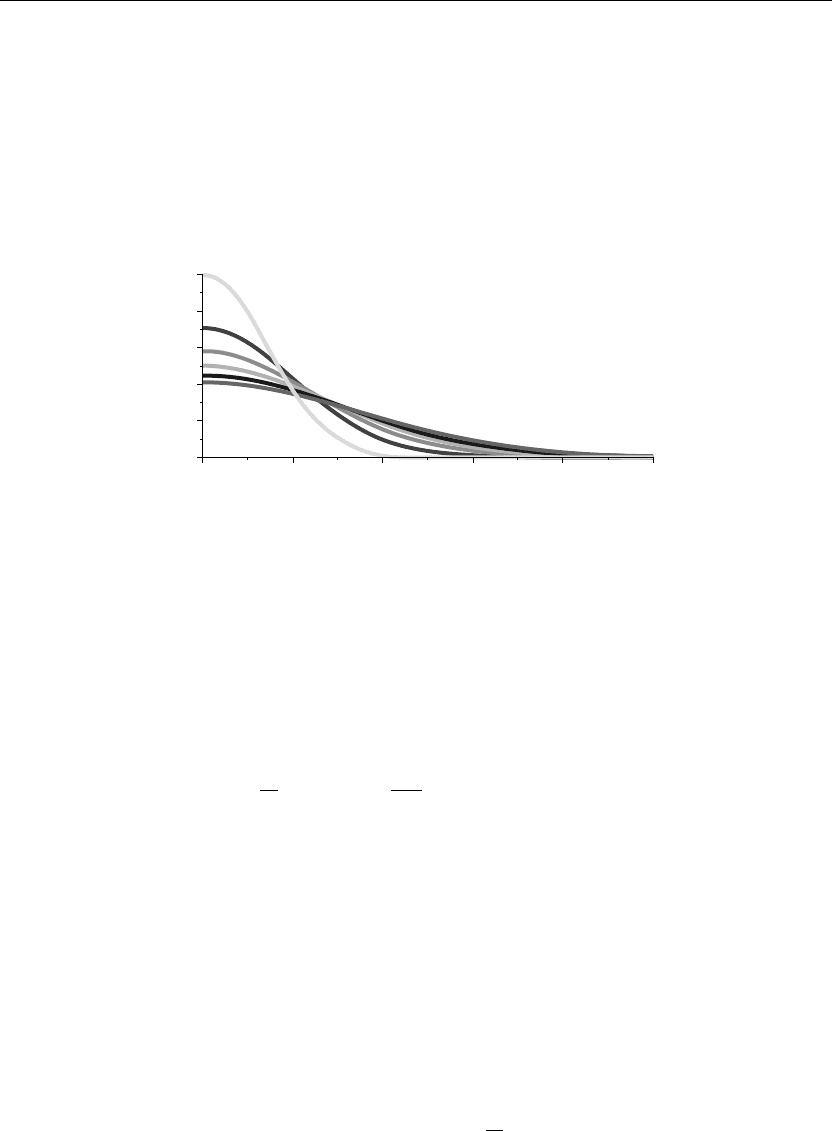
584 Chapter 9
ANIMATION SEQUENCE
> u(x,0):=subs(t=0,u(x,t)):u(x,1):=subs(t=1,u(x,t)):
> u(x,2):=subs(t=2,u(x,t)):u(x,3):=subs(t=3,u(x,t)):
> u(x,4):=subs(t=4,u(x,t)):u(x,5):=subs(t=5,u(x,t)):
> plot({u(x,0),u(x,1),u(x,2),u(x,3),u(x,4),u(x,5)}x=0..5,thickness=10);
0
0
2
4
6
8
10
12
x
345
Figure 9.4
EXAMPLE 9.7.7: (Solution in integral form) We seek the temperature distribution u(x, t)
in a long, thin rod whose lateral surface is insulated over the infinite interval
I ={x |−∞<x<∞}. The rod has an internal heat source h(x, t) given as follows. The initial
temperature distribution along the rod is 0, and the thermal diffusivity of the rod is k = 1.
SOLUTION: The nonhomogeneous diffusion partial differential equation is
∂
∂t
u(x, t) = k
∂
2
∂x
2
u(x, t)
+h(x, t)
The boundary condition is that the solution be absolutely integrable over the interval; that is,
∞
−∞
|u(x, t)|dx<∞
The initial condition is
u(x, 0) = 0
The internal source term is
h(x, t) = sin(t) e
−
x
2
4
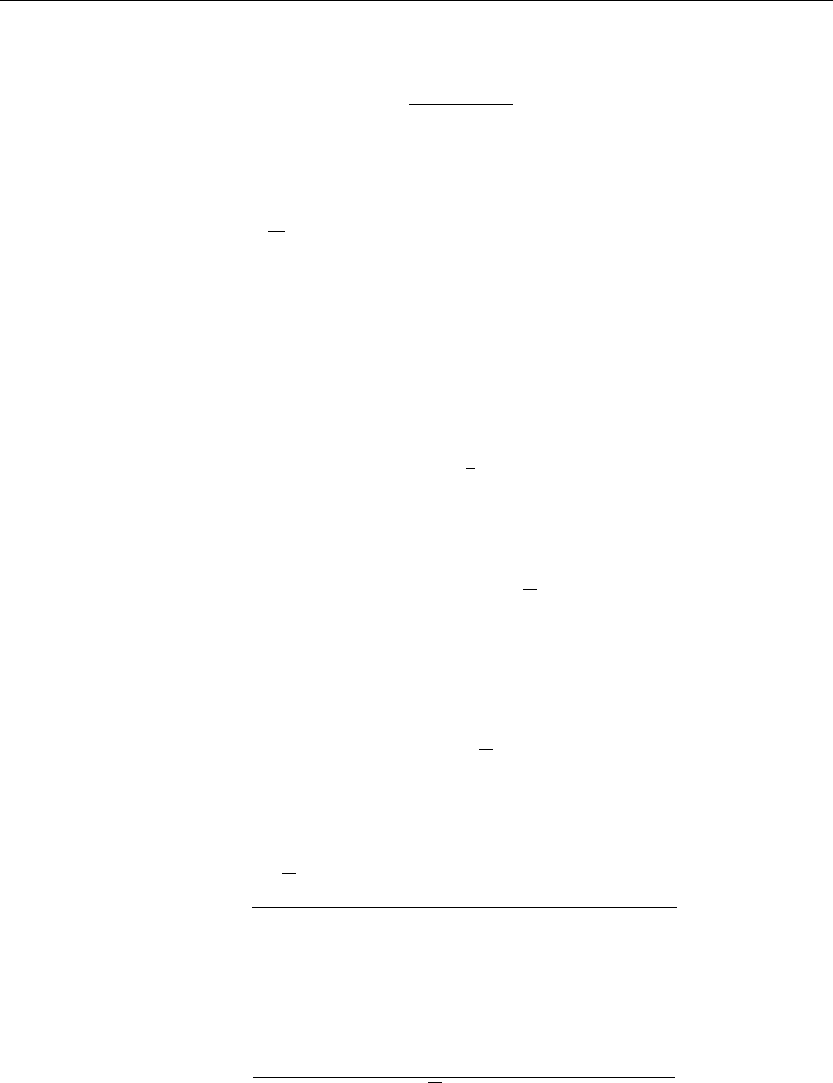
Infinite and Semi-infinite Spatial Domains 585
The Fourier integral form of the solution is
u(x, t) =
∞
−∞
U(ω, t) e
iωx
2π
dω
Here, U(ω, t) satisfies the nonhomogeneous differential equation
∂
∂t
U(ω, t) +kω
2
U(ω, t) = H(ω, t)
Assignment of system parameters
> restart:with(plots):k:=1:h(x,t):=sin(t)*exp(−xˆ2/4):
Fourier transform of source term
> H(omega,t):=Int(h(x,t)*exp(−I*omega*x),x=−infinity..infinity);U(omega,0):=value(%):
H(ω, t) :=
∞
−∞
sin(t) e
−
1
4
x
2
e
−Iωx
dx (9.29)
> H(omega,t):=simplify(value(%));H(omega,tau):=subs(t=tau,H(omega,t)):
H(ω, t) := 2e
−ω
2
sin(t)
√
π (9.30)
Fourier transform of solution
> U(omega,t):=Int(H(omega,tau)*exp(−k*omegaˆ2*(t−tau)),tau=0..t);
U(ω, t) :=
t
0
2e
−ω
2
sin(τ)
√
π e
−ω
2
(t−τ)
dτ (9.31)
> U(omega,t):=simplify(factor(value(%)));
U(ω, t) :=
2
√
π
1 − e
ω
2
t
cos(t) + e
ω
2
t
ω
2
sin(t)
e
−ω
2
(1+t)
ω
4
+1
(9.32)
Fourier integral solution
> u(x,t):=Int(U(omega,t)/(2*Pi)*exp(I*omega*x),omega=−infinity..infinity);
u(x, t) :=
∞
−∞
1 − e
ω
2
t
cos(t) + e
ω
2
t
ω
2
sin(t)
e
−ω
2
(1+t)
e
Iωx
√
π
ω
4
+1
dω (9.33)
We leave this answer in integral form.
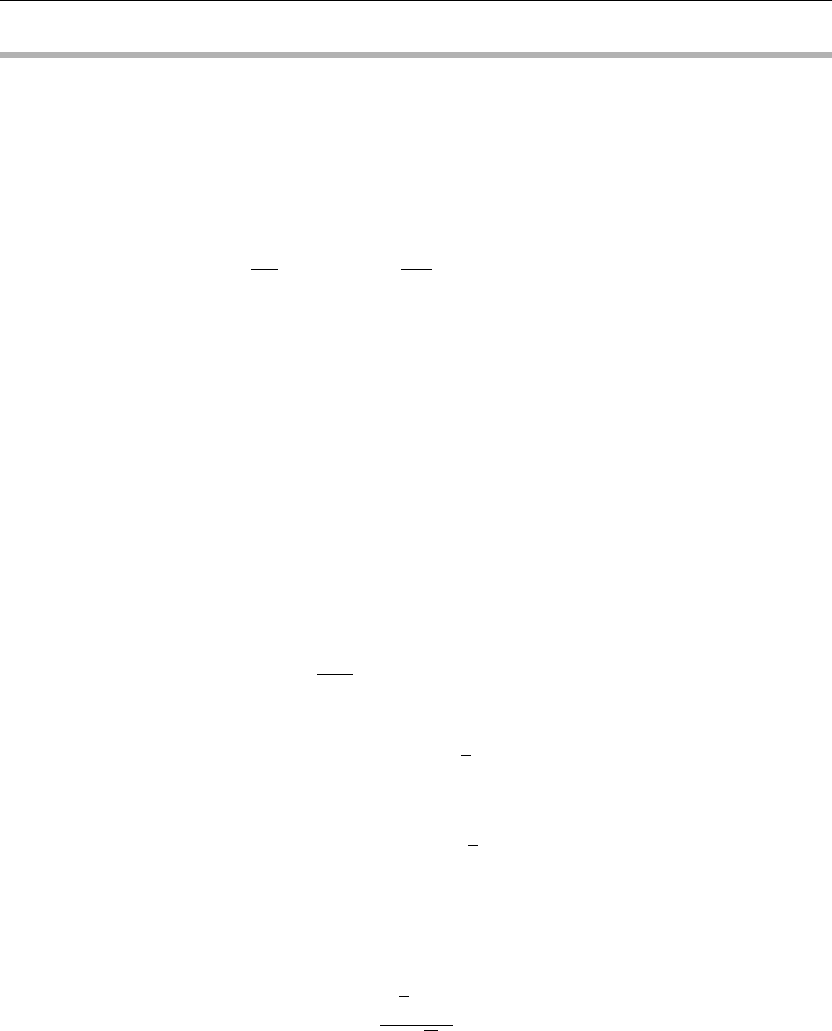
586 Chapter 9
9.8 Nonhomogeneous Wave Equation over Infinite Domains
As we did earlier for the diffusion equation, here we use the Fourier integral method (singular
eigenfunction expansion) to formulate the solutions to the wave partial differential equations
over infinite or semi-infinite intervals.
We first consider the nonhomogeneous wave partial differential equation over the infinite
interval I ={x |−∞<x<∞} with no damping in the system
∂
2
∂t
2
u(x, t) = c
2
∂
2
∂x
2
u(x, t)
+h(x, t)
with the two initial conditions
u(x, 0) = f(x) and u
t
(x, 0) = g(x)
where f(x) denotes the initial displacement of the wave, g(x) denotes the initial speed of the
wave, and h(x, t) accounts for any external forces acting on the system. The boundary
conditions are such that we require u(x, t) to be piecewise smooth and absolutely integrable
over the interval I.
As we did in Chapter 8, we first consider the homogeneous version of the preceding equation.
Using the method of separation of variables, as in Chapter 3, we arrive at two ordinary
differential equations: one in t and one in x. The x-dependent differential equation is, again,
of the Euler type and it reads
d
2
dx
2
X(x)+λX(x) = 0
A set of basis vectors of the preceding differential equation, for λ>0, is, from Chapter 1,
x1(x) = e
i
√
λx
and
x2(x) = e
−i
√
λx
If we set λ = ω
2
and we require that our x-dependent portion of the solution be bounded as x
goes to plus or minus infinity, then our x-dependent, orthonormalized singular eigenfunctions,
as shown in Section 9.2, can be written
√
2e
iωx
2
√
π
for −∞ <ω<∞.
From the Fourier integral theorem, these singular eigenfunctions are “complete” with respect
to piecewise smooth and absolutely integrable functions over the infinite domain. Thus, we can
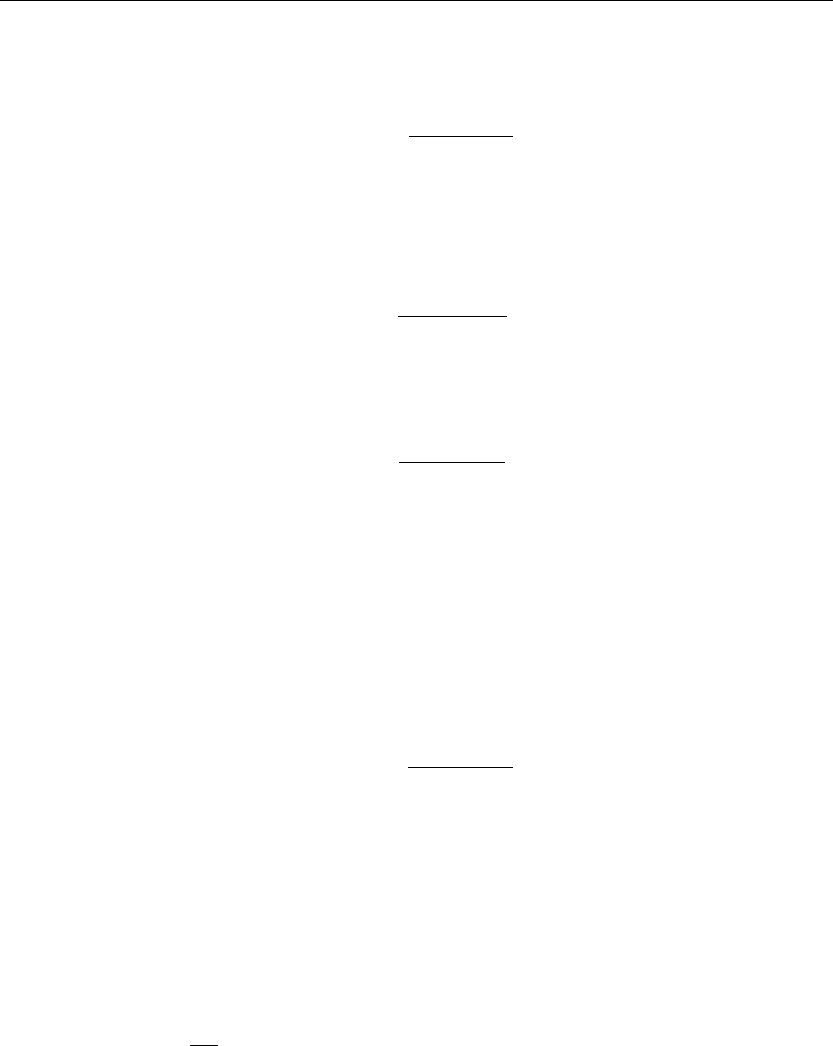
Infinite and Semi-infinite Spatial Domains 587
write our solution as the superposition of the given singular eigenfunctions, or, equivalently, as
the Fourier integral
u(x, t) =
∞
−∞
U(ω, t) e
iωx
2π
dω
From Section 9.2, U(ω, t) is the time-dependent Fourier transform of u(x, t). If we substitute
the two initial conditions into this solution, we get
f(x) =
∞
−∞
U(ω, 0) e
iωx
2π
dω
and
g(x) =
∞
−∞
V(ω, 0) e
iωx
2π
dω
Here, U(ω, 0) is the Fourier transform of the initial displacement function f(x) and V(ω, 0) is
the Fourier transform of the initial speed function g(x). We must assume that f(x) and g(x) are
both piecewise smooth and absolutely integrable over the infinite interval.
We now deal with the nonhomogeneous driving term in the same manner as we did in
Chapter 8. If the source term h(x, t) is piecewise smooth and absolutely integrable with respect
to x over the infinite domain, then we can express its Fourier integral as
h(x, t) =
∞
−∞
H(ω, t) e
iωx
2π
dω
where H(ω, t) is the Fourier transform of h(x, t).
We now require that all of the preceding functions behave in the same manner as for the
diffusion equation in Section 9.4; that is, if we substitute the assumed solution into the given
partial differential equation, and we assume validity of the formal interchange between the
differentiation and the integration operators, then we get the following equation:
∞
−∞
∂
2
∂t
2
U(ω, t) +c
2
ω
2
U(ω, t)
e
iωx
dω =
∞
−∞
H(ω, t) e
iωx
dω
In order for this equation to hold, due to the linear independence of the singular eigenfunctions,
we set the integrands equal to each other and arrive at the following second-order
